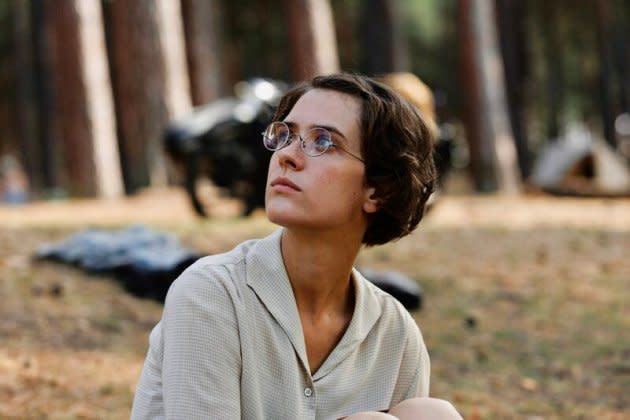
Sydney: sexy, gaudy, dark and savage
Book Review: Sydney by Delia Falconer
If history is written by the victors, it shows there are as many histories as there are historians.
So, as someone who grew up in and around Sydney, I was fascinated by Delia Falconer’s brave attempt to encapsulate my city’s length, breadth, culture and past in one book.
Not that it’s a history exactly. It’s more a dreaming, a trip through the author’s personal response to the place. While the language is poetic and the approach metaphysical, the book is packed with solid, researched fact. The 34 pages of acknowledgments shows an impressive depth and makes an interesting ‘to read’ list for enthusiasts.
The book explained a lot to me, analysing the psychic wounds Sydney’s people carry as a result of the city’s lack of history, its immense suburban sprawl, its class-riven convict origin and a cultural cringe driven by a deep fear that we are not yet a ‘real’ city in world terms.
The brutal bullying I saw and experienced as a child in the western suburbs is thus put into perspective, explained as coercive conformism.
Of the suburbs, Ms Falconer writes: “we will even go so far as punishing anyone who tries to make them less dull.”
My horror at the reality of Mt Druitt in the 1950s I can now see as the horror of having no past in a city that forgets, “a forgetting that forgets itself”.
A fibro house with no sewerage dumped on a rectangle of cleared dirt, on a gravel road, can be only what it is. There was no knowledge of Aboriginal history at the time, so these pink and pastel horrors lacked any context or story, any psychic anchor. By contrast, citizens of older cultures can see and hear their ancestors’ stories in the streets and countryside around them.
Sydney was always puritanical, and this is evident comparing Melbourne and Sydney’s bar cultures. In Melbourne, “anyone with a design degree and $2,000 can set up a funky bar”. Here, a tangle of imposed costs and red tape make the exercise a near-impossible and very expensive frustration that results in our always high-priced and usually plastic bar scene.
Anyone cheesed off by the bright-faced ‘Love Sydney’ brigade will like the book. Ms Falconer immediately cuts though the sexy, gaudy facade of the place and turns up an underbelly of savagery and rot. Suburbs with totally inappropriate British names were plonked onto an alien landscape that counterpoints between stark sandstone highs and humid, composting semi-tropical valleys. In a way the city is just a giant fibro bungalow.
There are no illusions here. An opening anecdote shocked me, about a note pinned to a windscreen in Elizabeth Bay, where the author lives: “I just backed into your car, and now I’m pretending to write a note. FUCK YOU!”. I’m guessing it was a Sydney landlord who left the indent of a four-wheel-drive towbar in someone’s bonnet.
The savage rape, mutilation and murder of Anita Cobby is detailed and presented as the result of a deprived suburban abattoir culture.
Kenneth Slessor’s Five Bells is woven into the story, an “elegaic poem” about the drowned Joe Lynch, now an “elemental spirit of the harbour” along with the warships’ bells which floated across the water in 1939. Now I understand the poem much better, and I also learned that Joe Lynch was the model for his brother Guy’s sculpture The Satyr in the Botanic Gardens.
But this is no black-armband history. Ms Falconer revels in the warm silky air of Sydney’s summer evenings, and relates how a north shore hospital in the 1950s sent each new mother home with a Jacaranda seedling, and don’t we all love their springtime glow.
“There is an uncanny moment, which lasts only for a day or two, when the purple on the trees and the fallen flowers reaches equilibrium, and the trees appear, quite eerily, to cast their own reflections on the ground.”
Ms Falconer spent her young childhood in McMahons Point, and she graphically describes the grimy Victorian moodiness of the industrial harbour foreshores before Darling Harbour was rejuvenated. In those times history had turned and the old port city was left with a plethora of rotting buildings made unuseable in an age of containerisation.
The city also lacked the budget to do much about it. Fortunately, by the time financial deregulation had turned on the finance taps which fuelled redevelopment, we had outgrown our modernist revulsion for the old. I remember as a young man curling my lip at the soot-filthy, boarded-up Queen Victoria Building and wishing someone would knock it down. How wrong I was.
Later in her childhood the author lived on the north shore, to a thrumming summer soundtrack of cicadas in their many species “which seemed calibrated, as if by some electric charge, to the heat”.
A section of a chapter explores the idea that Yellow Monday cicadas got their name from “Yellomundee”, an Aboriginal shaman described by Watkin Tench in his colonial anecdotes. The plausible story becomes a metaphor for our city. Not only have we forgotten the Aboriginal origin of some Europeanised names, but the cicadas’ strategy of singing in chorus to mask the location of any individual is likened to our “almost pathological suburban desire for bland sameness”.
There is humour, too, as in the name their Aboriginal guides called Watkin Tench and his white compatriots on their 1791 expedition to find out whether the Nepean and Hawkesbury were the same river. The whites stumbled along, laden by heavy packs and supplies while the blacks glided over their country, laughing at them and calling them “goninpatta”, which translates as “shit-eater”.
The book, by connecting Sydney’s ancient past and today’s glitz, made me understand why we all need our Dreaming. The book in fact can lay claim to being part of our city’s Dreaming. As such it is required reading.
by Michael Gormly
Available October, published by New South, 272pp, $29.95
By the same author: The service of clouds; The lost thoughts of soldiers









